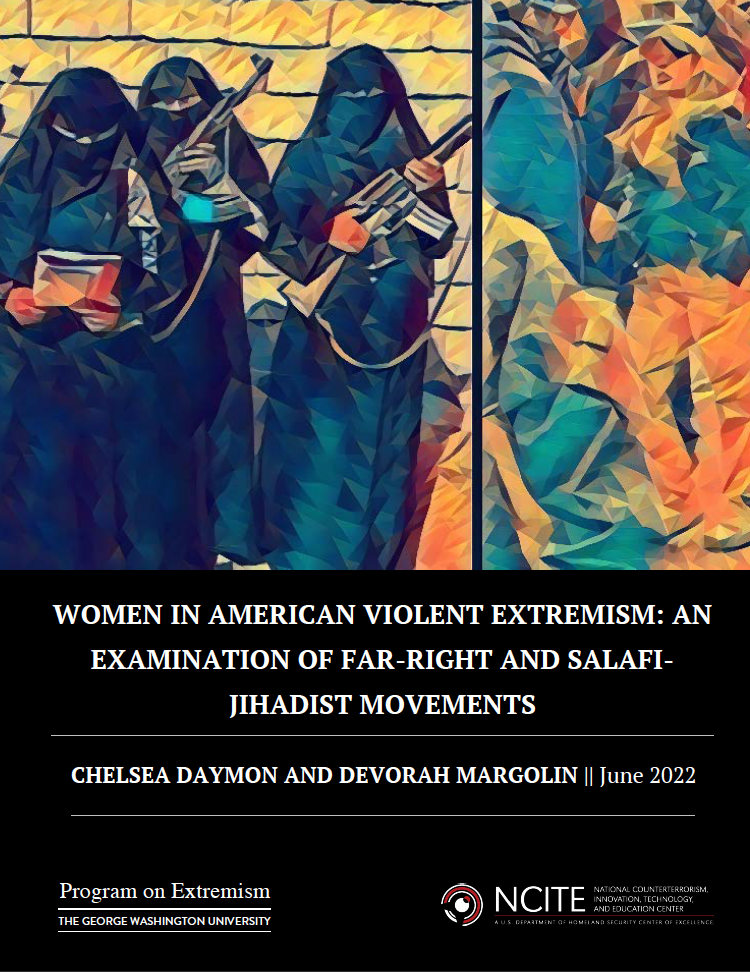This report compares women’s participation in far-right and salafi-jihadist movements in the United States through the examination of four case studies: the Proud Boys, the Oath Keepers, Al-Qaeda, and the Islamic State. To do so, the authors apply a unique analytical framework that examines three key aspects of women’s participation to compare similarities and differences. First, the report takes a top-down approach to analyze how organizations conceptualize women’s roles. Second, it takes a bottom-up approach to explore how women have participated in violent extremism in the United States. Finally, it uses a gendered lens to address how groups have responded when women have participated in violent extremism in America. Key observations and findings include:
- To understand how groups incorporate women into their ranks, it is essential to look at group ideologies and goals. These factors help determine women’s participation in violent extremism.
- Far-right and salafi-jihadist movements often adhere to gendered stereotypes, patriarchal societies, and power dynamics that incorporate both overt and underlying gendered beliefs that women must circumvent. These traditional gender roles ensure that women are rarely visible on the ‘frontlines’ of group activities. This in turn enables men to take on more public-facing and violent roles, leaving women’s contributions to these movements often underplayed, underexplored, and misunderstood.
- Groups driven by conservative gendered ideologies are more likely to cultivate gender segregation and the exclusion of women in their ranks. This can result in the removal of women’s agency and make it harder for women to undertake active, tactical, or leadership roles in organizations. On the other hand, while pervaded by casual misogyny, far-right anti-government groups are more likely to incorporate women into their ranks, while at the same time viewing women as pawns to further their causes.
- Women involved in violent extremism in the U.S. see themselves contributing to values and ideals they believe in. Despite gendered conceptualizations within violent extremist organizations, women find ways to engage in these movements in various manners, sometimes beyond the roles created by groups. While organizations may have clear conceptualizations of women’s roles and gender dynamics, women themselves can be inspired by groups and movements, and reinterpret dictated gender roles in order to shape their own actions.
- Far-right movements in the U.S. provide women with greater personal capacity to participate in public-facing and leadership roles. In contrast, women in salafijihadist movements participate in auxiliary and, more frequently, operational roles that serve the strategic activities of the groups. However, women operating in the U.S. and inspired by salafi-jihadist ideology often have greater autonomy to carry out violent acts as they operate outside of the direct control of groups.
- When faced with women’s participation in violent extremism, far-right and salafi-jihadist movements respond to women in varying ways, much of the time guided by their ideological and strategic goals. Women’s engagement in violent extremism is often due to and shaped by these ideological and goal-oriented drivers.


